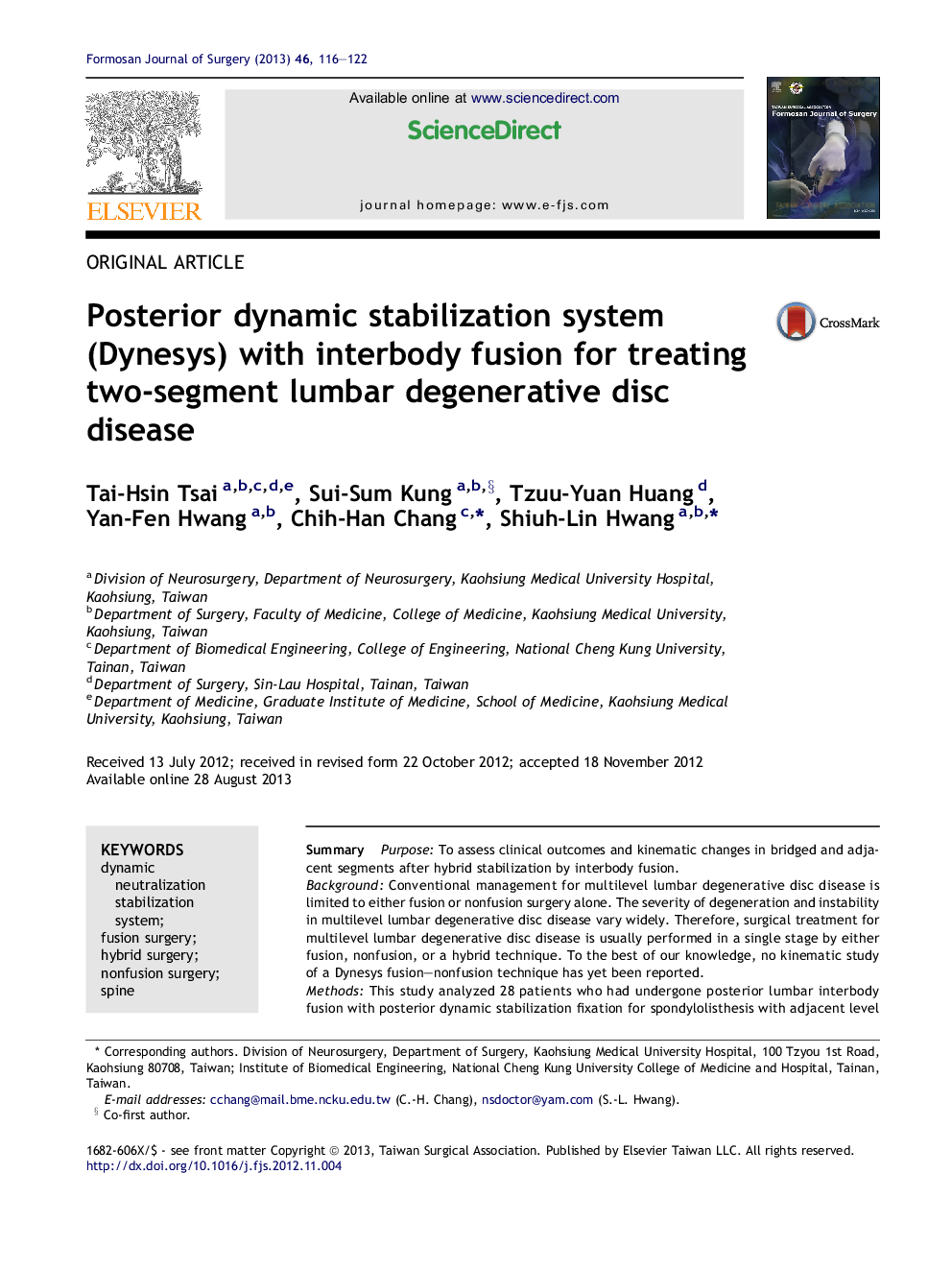| Article ID | Journal | Published Year | Pages | File Type |
|---|---|---|---|---|
| 4284982 | Formosan Journal of Surgery | 2013 | 7 Pages |
SummaryPurposeTo assess clinical outcomes and kinematic changes in bridged and adjacent segments after hybrid stabilization by interbody fusion.BackgroundConventional management for multilevel lumbar degenerative disc disease is limited to either fusion or nonfusion surgery alone. The severity of degeneration and instability in multilevel lumbar degenerative disc disease vary widely. Therefore, surgical treatment for multilevel lumbar degenerative disc disease is usually performed in a single stage by either fusion, nonfusion, or a hybrid technique. To the best of our knowledge, no kinematic study of a Dynesys fusion–nonfusion technique has yet been reported.MethodsThis study analyzed 28 patients who had undergone posterior lumbar interbody fusion with posterior dynamic stabilization fixation for spondylolisthesis with adjacent level stenosis between May 2007 and June 2008. All patients were followed up for at least 2 years. Clinical characteristics were then retrospectively reviewed. The visual analog scale (VAS) was used to score both lower limb pain and back pain. Patient functioning was evaluated using the Oswestry Disability Index (ODI).ResultsBoth VAS and ODI significantly improved during the follow-up period (p < 0.001). Global motion significantly decreased after surgery (p = 0.027). Analyses of adjacent segment motion after surgery showed significant increases in neutral lordotic curves (p < 0.001) and in range of motion (ROM; p < 0.001). Whereas the adjacent segment tended to show hypermobility, ROM measured in the bridged segment before and after surgery did not change significantly.ConclusionDynesys stabilization with interbody fusion improves clinical outcomes, enables successful interbody fusion, and maintains the ROM in the bridged segment. However, the procedure may decrease ROM in the global segment and cause hypermobility in the adjacent segment. Further in vivo or in vitro experiments are needed to optimize spacer length and cord tension when performing this procedure.
